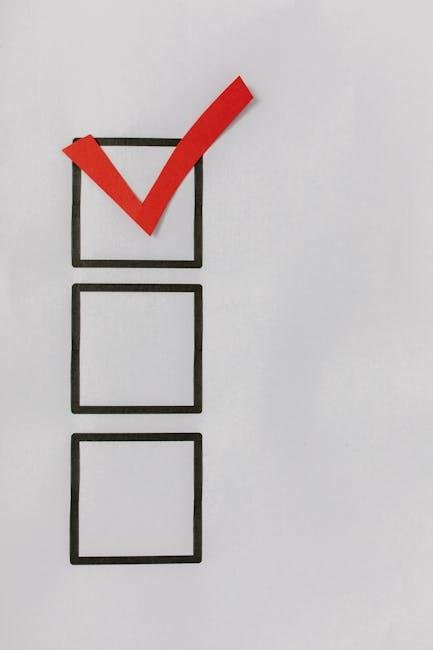In a world brimming with specialized vocabularies and technical terms, it’s all too easy for language to become a barrier rather than a bridge.Jargon can weave a tapestry of sophistication that frequently enough leaves the uninitiated feeling lost in translation. Yet, as communication evolves and our interconnectedness deepens, the need for clarity has never been more pressing.This article explores the art of transforming complex jargon into straightforward language, demystifying the complexities that can obscure our messages. By turning the intricate into the accessible, we can ensure that our ideas resonate across diverse audiences, fostering understanding and collaboration in an ever-changing landscape. Join us as we delve into the strategies that empower us to speak clearly, making our voices heard loud and clear.
Navigating the Maze of Jargon: Understanding the Impact on Communication
In today’s hyper-connected world,the proliferation of specialized vocabulary can often create barriers to effective communication. Jargon fills our conversations, making it difficult for individuals outside of a particular field to understand the core message. This can lead to misunderstandings, frustration, and even alienation, particularly in settings were collaboration is key. To counteract this effect, it’s essential to recognize the importance of clarity in communication by adopting straightforward language that resonates with a broader audience. When we choose to simplify our vocabulary, we can transform complex ideas into digestible insights that foster engagement.
One way to achieve this conversion is through consistent practise. Here are a few strategies that can assist in turning jargon into clarity:
- know Your Audience: Tailor your language based on the familiarity level your audience has with the subject.
- Define Terms: When using necessary technical phrases, provide clear definitions upfront.
- Use Analogies: Relate complex concepts to everyday experiences that your audience can easily grasp.
Implementing these strategies can be supported by visual aids, such as tables that summarize details without the clutter of jargon. Here is a simple table that illustrates the concept:
| Jargon | Plain Language |
|---|---|
| Streamline | Make simpler |
| Leverage | Use |
| Synergy | Teamwork |

Decoding Complexity: Strategies for Simplifying Technical Language
Technical jargon can often feel like a barrier, obscuring the message behind a wall of complex language. To bridge this gap, one effective strategy is to identify key concepts and replace them with simpler terms that resonate with a broader audience. This not only facilitates understanding but also enhances engagement. To achieve this, consider the following tactics:
- Use analogies: Compare technical concepts to everyday experiences to make them relatable.
- Break down terminology: Define difficult words or phrases in layman’s terms right when they first appear.
- Employ visuals: Incorporate diagrams or infographics that translate jargon into more digestible formats.
- Consider your audience: Tailor your language to the knowlege level of your readers to avoid unnecessary confusion.
Additionally, creating a simple glossary of terms can serve as a valuable reference point for readers. This list can be included at the end of your content or in a sidebar,helping to clarify terms without hindering the flow of information. Here’s a sample layout:
| Term | Definition |
|---|---|
| API | Application Programming Interface – a set of rules for software interaction. |
| cloud Computing | Using internet-based services to store and manage data. |
| Encryption | Transforming data into a secure format to protect it. |

Building Bridges: Techniques for Engaging Diverse Audiences
effective communication is essential for building connections, particularly when engaging with diverse audiences. one key technique is to simplify complex terminology. Avoiding jargon creates an inclusive habitat where everyone feels empowered to contribute. Instead of using industry-specific language, consider these strategies for clarity:
- Know Your Audience: Tailor your language based on the background and familiarity of your audience with the subject matter.
- Use Analogies: Relate technical concepts to everyday experiences, making them easier to understand.
- Encourage Questions: Foster a culture where team members can ask clarifying questions without hesitation.
Additionally,transforming information into digestible formats can bridge comprehension gaps. Utilize visual aids and structured formats to convey messages effectively. The following table illustrates various approaches to enhance audience engagement:
| Technique | Description |
|---|---|
| Infographics | Visual representations of data that simplify complex information. |
| Videos | dynamically presents information, making it more relatable and easier to process. |
| Interactive Workshops | Encourages participation and practice, reinforcing learning in diverse ways. |

Empowering Clarity: Tools and Practices for Effective Communication
Effective communication often gets lost in a maze of jargon. To bridge this gap, it’s vital to adopt strategies that promote understanding and engagement. start by identifying your audience and their level of familiarity with the subject matter. Avoid technical terms unless you’re certain the audience understands them. Rather of saying “synergize our core competencies,” consider saying “work better together using our strengths.” Here are a few practices that can definitely help:
- Use analogies: Relate complex ideas to everyday experiences.
- Simplify language: Replace difficult words with simple alternatives.
- Encourage feedback: Ask for clarification to ensure mutual understanding.
Creating a culture of clarity involves deliberate effort and ongoing adjustment. Tailor your communications by breaking down information into digestible parts. one effective tool is the use of visuals such as charts or infographics. These can transform elaborate data into accessible insights, making it easier for everyone to grasp the message. Here’s a simple table that shows examples of jargon and their clear alternatives:
| Jargon | Clear Communication |
|---|---|
| Leverage | Use |
| Bandwidth | Capacity |
| Paradigm shift | Change in thinking |
Wrapping Up
In a world overflowing with complex terminology and specialized language, the power of clear communication has never been more vital.As we’ve explored, turning jargon into language that resonates and connects with all audiences not only fosters understanding but also builds relationships based on trust and clarity. Whether you’re a seasoned professional or just starting out, the ability to demystify your message transforms the way ideas are exchanged and understood.
By embracing simplicity and clarity, we pave the path to effective dialogue, enabling everyone to engage meaningfully irrespective of their backgrounds. So, as you step back into your conversations, remember: the goal is not just to be heard, but to be understood. Let’s strive to bridge the gap between technicality and clarity, ensuring that our words illuminate rather than obscure. After all, in the art of communication, every voice matters, and every idea deserves to shine.

